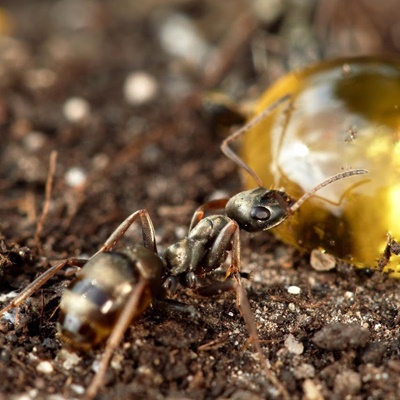Ants
Pest Advice for controlling Ants
The commonest species that invades houses is the Black Garden Ant, which is actually very dark brown. All ants have the main divisions of the body (head, thorax, abdomen) distinctly separated by very narrow waists and have a sharp elbow joint in their antennae. They are highly organised s

ocial insects. It is the foraging worker ants that invade buildings in search of food. These are from 3 to 5mm in length and are attracted to sweet foodstuffs which they take back to the nest to feed to the larvae and queen.
The so-called ant's eggs sold for aquaria fish are actually the pupae. Flying ants are the reproductive males and females. These mating ants are winged and have a nuptial swarming flight during only a few days in July or August. Mating takes place in the air and the female then seeks out a nest site where she stays for the winter, laying eggs the following spring in order to start up a new colony.
How to deal with Ants
First, find the nest entrances. These are indicated by small piles of earth pellets or can be located by watching the ants moving back and forth from nest to food.
Pouring a kettle of boiling water over the nest site is a first-aid measure.
Some products cause the workers to destroy their own nests, for example, sugar based liquid bait. The workers are attracted to the bait and carry the insecticide back to the larvae and queen. Some centrally heated blocks of flats may be troubled by the much smaller tropical Pharaoh’s Ant, which prefers protein to sweet foods and has multiple - and often inaccessible – nests within the building structure.

Ghost Ants are becoming more common in heated buildings. These are a similar size to Pharaoh’s ants and is pale coloured with a dark thorax and head. Control must be left to professional operators.
Having problems with ants?
Use a trained professional pest controller call us on 01269 844503 / 07772 289648 or email us on [email protected]



